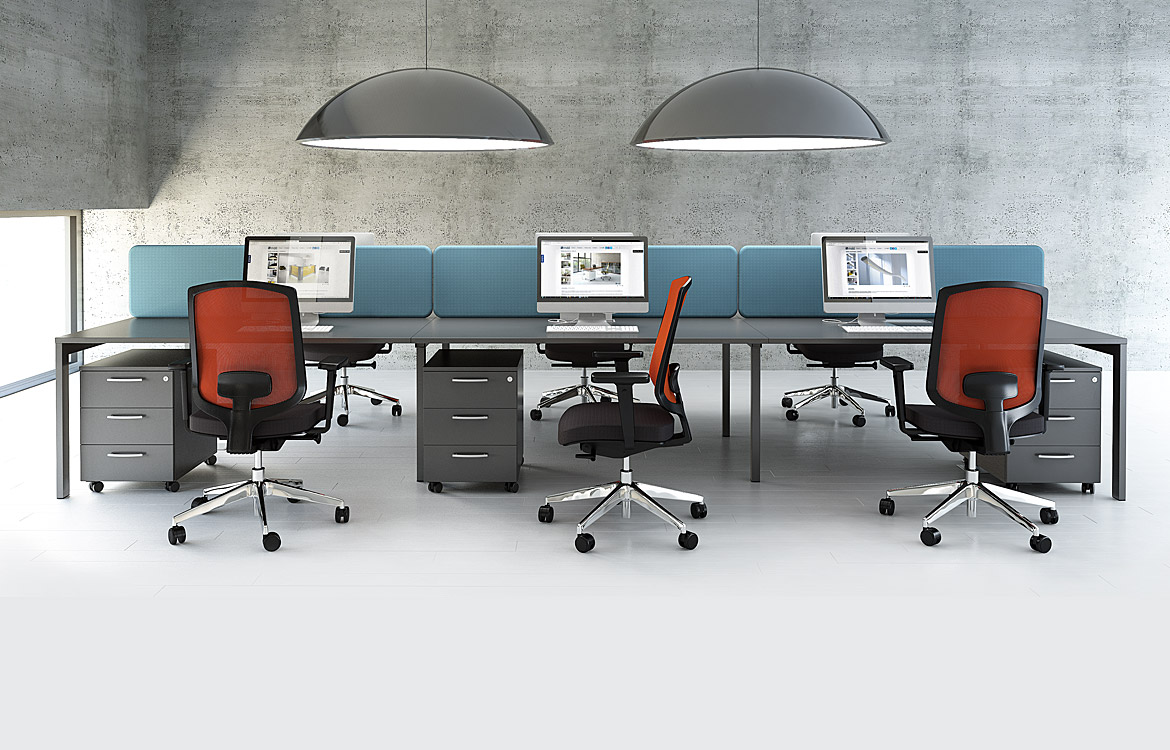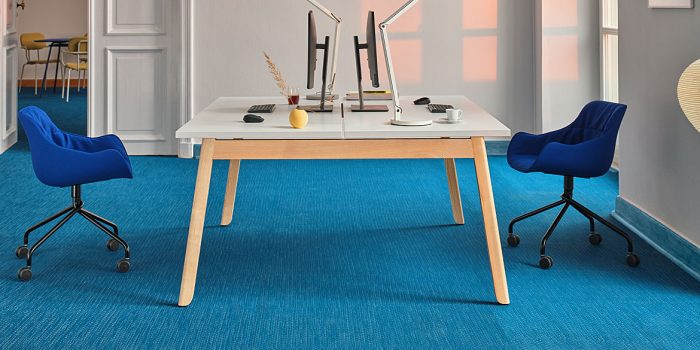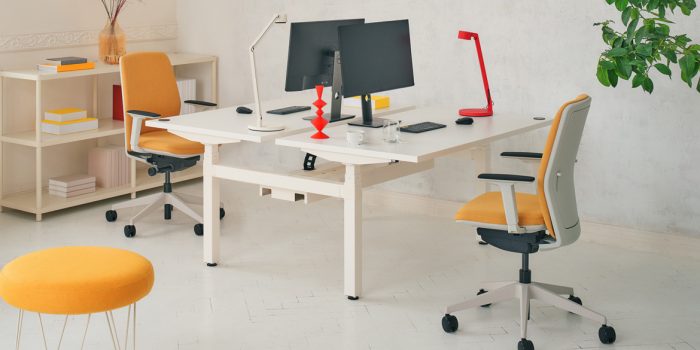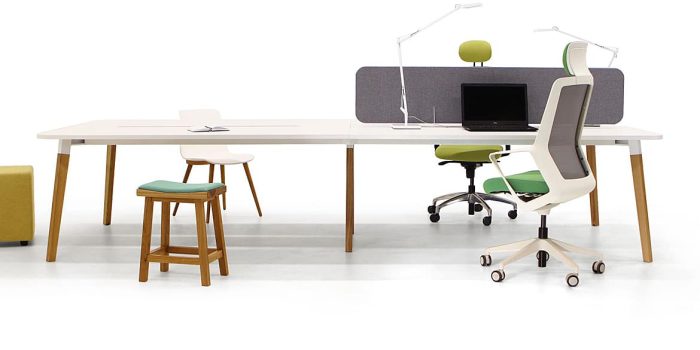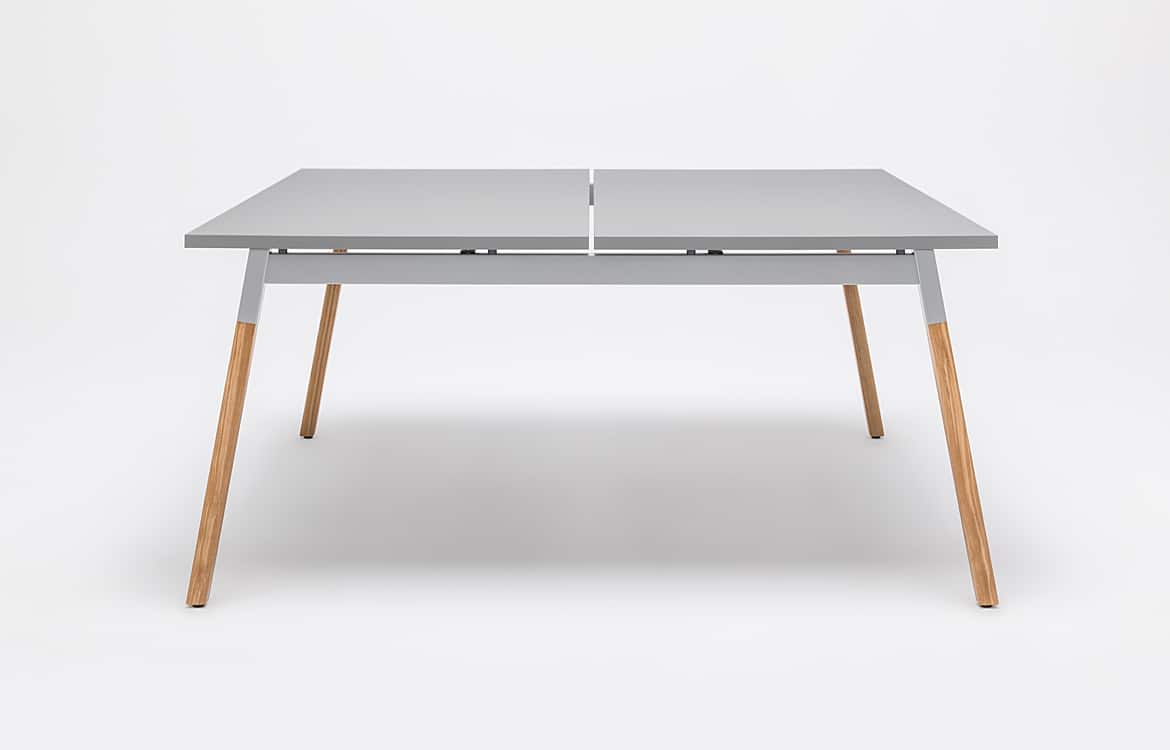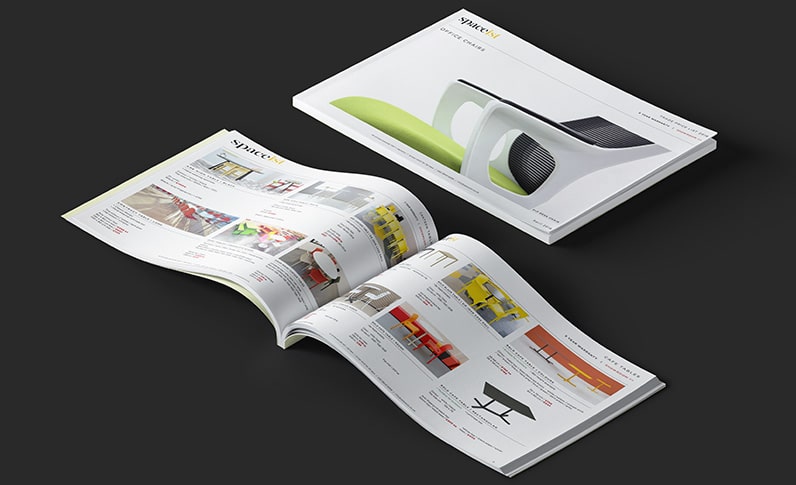We often talk about people’s preferred desk height, but what about the depth of a desk? Though standard desk sizes are available, it’s not always clear how to work out the correct office desk depth needed for different uses and settings. As an experienced contract furniture supplier, we have a good understanding of the exact requirements of commercial and public sector businesses. So if you don’t know how deep a desk should be, read on.
- Supplier of commercial, modern furniture for workplace, education, leisure & public spaces
- 020 8840 6298
- [email protected]
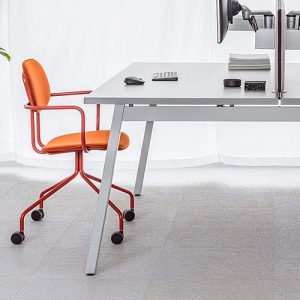
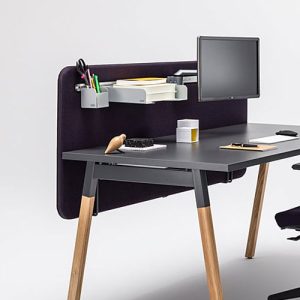
How deep should a desk be?
Let’s start by looking at desk depth and the minimum amount of space required for a productive working surface.
The standard depth of a modern office desk is generally around 70-90 cm, but this could vary depending on the type of work undertaken at the desk.
- The average office desk depth is 80 cm, (or 800 mm, or 29-30 inches).
- For a computer desk depth, (by which these days we usually mean a desk that supports one or two computer monitors, a keyboard and a mouse), aim for a minimum width of 80 cm.
- Reception desks need sufficient space for staff to undertake work as well as greeting people and so are usually around 70 cm – 90 cm deep. These desks are generally much longer than office desks to accommodate extra workers and equipment, as well as to make space for face-to-face contact with visitors.
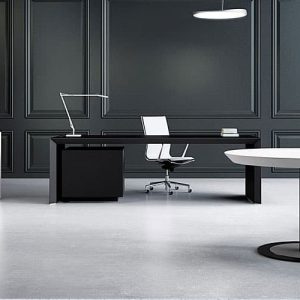
Standard desk dimensions:
Most commercial office furniture suppliers will offer desks in a range of standard sizes. (Domestic furniture suppliers will normally offer a much smaller variety of sizes).
Standard office desk sizes are:
- 120 cm (width) x 80 cm (depth).
- 140 cm (width) x 80 cm (depth).
- 180 cm (width) x 80 cm (depth).
Executive desks are usually larger so the suggested sizes for these would be:
- 200 cm (width) x 100 cm (depth).
- 220 cm (width) x 100 cm (depth).
- 240 cm (width) x 100 cm (depth).
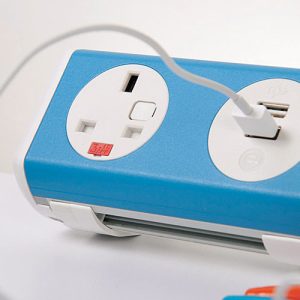
Desk depth: different types of desks.
Depths for paper or file-based administration desks.
Desks for paper-based administration work should normally have a large desktop area and the suggested depth size is:
- Up to 160 cm depth – If this is too wide for the available working space combine the desk with a return to create an L-shaped desk with storage space underneath.
Depths for group and team desks.
For desks designed to accommodate groups of people the average sizes are approximately:
- Four person desk – 320 cm (width) x 161 cm (depth).
- Two person desk – 160 cm (width) x 161 cm (depth).
Depths for designers and architects desks.
Designers and architects historically favoured a large bench-style desk or the traditional draughtsman’s table, both designed to accommodate large drawings and papers.
- Where paper drawings are still used or design samples are likely to take up a lot of space, go for a minimum design desk width of 160 cm – 180 cm.
Depths for standing and sit-stand desks.
Standing desks vary in height but the depths are generally the same as traditional office desks. Where larger monitor stands are needed, choose a deeper desk.
Bespoke desk sizes.
A good contract desk supplier will be able to offer a wide range of desk sizes to seat up to eighteen people and a huge variety of sizes in between. They will also be able to help with creating bespoke desk sizes too, all with matching storage and furniture.
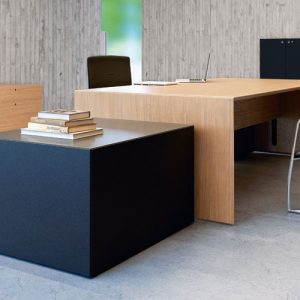
What desk size is best for you?
When trying to work out what desk size is best for you, start by thinking carefully about what type of work you do at the desk.
- Is the desk designed for a sole purpose, with equipment that doesn’t move from day to day?
- Or should the desk work as a multi-purpose piece of furniture, designed to fulfil more than one function?
Then think about how much space you have in your room – the desk needs to fit the room with sufficient space for suitable (preferably ergonomic) seating – even at home!
If a smaller work room or office means that you are limited to a smaller size of desk, consider what needs to be placed on the desk all day and what can be stored separately:
- Could an intelligently designed monitor stand or arm free up valuable desk space?
- Could a pull-out shelf underneath the desk make extra space for a keyboard?
- Could other hardware and stationary live happily on other office shelving units?
Think hard about which items actually need to live on your desk full time. Don’t worry about what the desktop looks like on Instagram, this is about real life. A perfectly arranged desktop does not necessarily equal a practical working space.
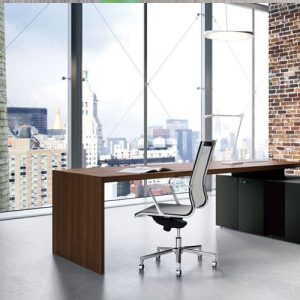
Conclusion.
Whatever the size of your office, the modern office desk should be of the suggested standard minimum depth of around 80 cm to enable people to work most productively. Different work specialisms may require differently sized desks.
Where room size is constrained, consider bespoke desk sizing and effective under-desk storage solutions to minimise desktop clutter and free up space.
FAQs
What do you suggest for a built-in desk depth?
It’s tempting to try and make use of even the smallest spaces by building in, but even a built-in desk depth should be around 80 cm deep to allow sufficient working space.
What if I don’t have a lot of space for the standard size desk?
If space is an issue, an office stool has a smaller footprint than a chair and may help to create enough room to have a larger desk with extra working space.
How can I have a clear desk and an inspiring office space?
A clear desk doesn’t mean a dull desk. Securely stored clutter can free up space for things you absolutely need to keep close to hand, like your phone. Or add something beautiful and inspiring, like a framed family photo or a favourite plant.
What can I do to free up desktop space?
Headphones, spare charging cables, stationery and paperwork can all be removed to nearby storage. Consider investing in under-desk storage – a small set of drawers or shelves, on castors if preferred, can be a great way to keep everything you need close to hand but off the desktop, giving you loads more working space.


